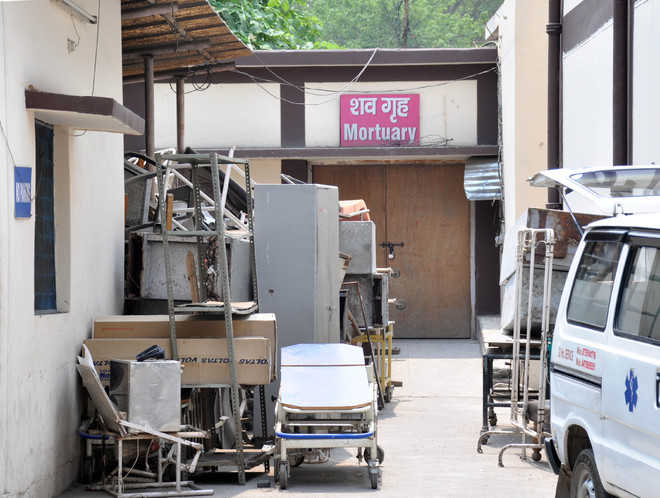Neena Sharma
Tribune News Service
Dehradun, May 8
The health system in Uttarakhand is ailing and the worst affected are villagers living in the hills. Accessibility to quality health care, besides shortage of doctors and paramedical staff are the main problems that rural people confront in the state. The problem of accessibility for hill people becomes all the more stark as most of the health facilities in their areas are not operational.
Minuscule availability of doctors in rural areas
In Uttarakhand, a meagre number of doctors cater to the medical care needs of 70 per cent of the rural population. On the other hand, a large number of doctors are concentrated in urban areas such as Dehradun, Haldwani, Udham Singh Nagar and Haridwar. “The problem became acute during the intervening years of the creation of Uttarakhand. Though there are a number of government health facilities in rural areas, these lack the requisite number of doctors and paramedical staff. It will be too much to expect the private sector to serve rural population, as it is guided by profit motive. Their interests can best be served in cities, which is a shame,” says Dr Geeta Joshi, former Additional Director, Health.
Missed gains under NRHM
The National Rural Health Mission (NRHM) was launched primarily to address these problems. Though significant gains have been made under the programme, the basic aim to provide health care to rural masses has not been achieved.
“We are grappling with the accessibility problem even after more than 10 years of the programme in operation. Our rural folk continue to suffer. The population in the state is scattered and thus the construction of more sub-centres and primary health centres is required. The NRHM was crafted to address these problems, but we have achieved fewer targets than expected,” says Dr RP Bhatt, former Director General, Health.
Scattered population
Hospitals and medical centres in the state are plagued by a shortage of manpower, non-functioning equipment in the operating theatre and insufficient number of labour rooms. According to the Uttarakhand Department of Health, a doctor is serving 10,000 persons in the state while according to the World Health Organisation norms, a doctor should be able to serve a settlement of 1,000 persons.
Skilled personnel are unwilling to work in remote rural areas of the state due to poor transportation and infrastructure and limited accommodation. As vacant posts have not been filled, the workload on the existing staff has increased manifold.
A lot of patients from far-off places in Pithoragarh, Pauri Garhwal and Chamoli districts travel to Dehradun and other urban centres to avail of life-saving treatments such as dialysis. While primary health care facilities continue to be beset with a shortage of staff and absenteeism, the private sector has little incentive to make heavy investments in rural areas. Moreover, Uttarakhand has not been able to make much headway in the use of technology. It can no longer ignore the problems of rural people.
Telemedicine services to provide medical consultation in far-flung areas have not yet been started. These were intended to overcome geographical barriers, connect users, who are not in the same physical location, with an aim to improve health outcomes. Similarly, teleradiology could be used to tide over the shortage of trained radiologists.
Health plan for rural people
A health plan is required to address the problems of rural people. Lack of trained medical professionals is one of the major hindrances in the improvement of health and sanitation of rural people. The health plan with inbuilt standard operating procedures for paramedical staff could boost health care facilities in the villages. Trained paramedical staff could provide limited curative care and primary health care to people. Panchayats could provide them two rooms for routine examination of patients. They could also be trained to look into sanitation and other health-related issues in the villages. The trained paramedical staff could also guide serious patients to higher medical centres. The implementation of the health plan could be monitored at the panchayat level. Similarly, there is need to draft district and state level plans.
Though this was envisaged under the National Rural Health Mission (NRHM), it was not implemented in the state. Southern states have not only implemented the plan but have also improvised on it. “Its implementation would have certainly helped in addressing primary health needs of rural people,” says RP Bhatt, former Director General, Health.
Unlock Exclusive Insights with The Tribune Premium
Take your experience further with Premium access.
Thought-provoking Opinions, Expert Analysis, In-depth Insights and other Member Only Benefits
Already a Member? Sign In Now











